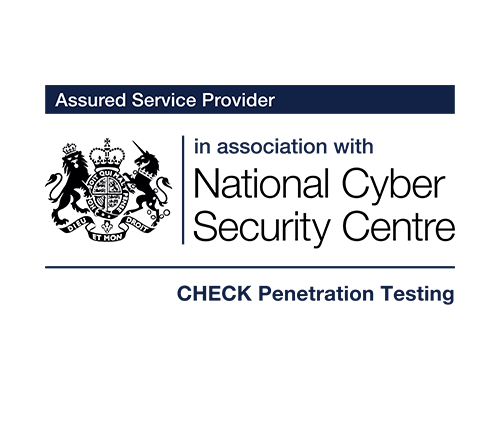TL;DR
- How you go about learning about the fundamentals of DFIR
- Curiosity, discipline, and passion are the markers for a successful DFIR analyst
- DFIR is a team’s game, nobody masters it all
- It’s never been easier to learn, and there’s a strong community to help you.
Introduction
Digital Forensics and Incident Response (DFIR) has a certain appeal to aspiring cybersecurity professionals. The mix of ‘CSI-style’ forensic investigations with the chaos and pressure of incident response engagements.
If you possess a natural curiosity and have a passion for uncovering the ‘why’ and ‘how,’ you are likely to thrive in the field of DFIR.
What can an academic path into DFIR look like?
Well, I started my ‘cyber’ journey studying for a computer science diploma, I didn’t know what forensics was at that time. It wasn’t until searching for university courses that I came across a bachelor’s degree titled ‘Digital Forensics’ – as you will all agree, it sounds cool. I immediately fell in love with the field and later continued, studying a master’s degree in ‘Advanced Security and Digital Forensics’.
I still remember my first year of learning about steganography (hiding data inside images) and mobile forensics, where I learnt how to extract data, recover deleted messages, and piece together user activity from forensic artefacts left behind. However, the real value wasn’t just the ‘cool’ modules.
What the degree gave me was a solid foundation in how operating systems handle files, what “deleted” really means at a disk level, how artefacts are created and modified and why a computer behaves the way it does. Those fundamentals shape how your brain thinks, it helps you ask yourself the right questions: Where would this data live? What would create this artefact? What am I really looking at?
Without this understanding, you are just pressing buttons and relying on what the tool gives you. Remember, you can’t investigate what you don’t understand.
Cloud, Network, Mobile, Computer and IoT forensics. You could throw the word ‘forensics’ onto anything and I would be interested. Each area comes with its own nuance. Networks leaving behind trails of packets to reconstruct, mobiles hiding data in obscure SQLite databases and IoT devices holding storage you’d never expect to see. But the overall concept is simple, the data tells a story, you just need to know where to look.
Starting out in DFIR
If you’re looking to get hands-on experience in digital forensics, starting in law enforcement can be an excellent route. It’s where many professionals first learn the practical side of evidence handling and investigation.
Law enforcement was where I gained my first practical experience in the field. I spent two years signing tamper evident bags, taking photographs, stripping down laptops and acquiring hard drives that could then be investigated further. It wasn’t ‘sexy’, but it drilled the golden rule of forensics into me, preserve the evidence and also important foundations of the field, such as confidentiality and integrity.
As you progress, you take on more specialised roles. For many people, that might mean going from stripping laptops to examining mobile devices. You’re not just removing hard drives anymore, you’re extracting data from mobile devices, recovering deleted messages and analysing encrypted applications. You might begin analysing disk images, pulling storage from drones, examining routers, stripping and parsing data from cars, or reviewing artefacts from home IoT devices.
Every device comes with its own artefacts, it’s own quirks, and it’s your job to understand how each of them stores, modifies and ‘destroys’ data. The more you ‘do’, the more instinctive you become.
One of the most daunting, but strangely thrilling, parts of the job was giving expert testimony in Crown Court. I was tasked with explaining complex, technical findings to a jury – which no certificate can prepare you for.
I have seen things that I can’t write about in a blog post and examined devices at murder scenes, but all in all, the job satisfaction you gain from the back of that is invaluable.
The private Industry
After years in law enforcement, I made the move into the private sector, and the change of tempo was evident. In policing, the thoroughness is everything, so you can build a watertight case that can stand up in court.
However, in consultancy, when a client is actively under attack, they don’t want to know what extraction you can obtain from a device or how many devices you can acquire. Their first questions are:
- Are the attackers still there?
- How did they get in?
- What have they taken?
Analysing volatile evidence in the wild before it vanishes brings another level of pressure.
The skill in Incident Response is knowing what matters right now.
The technical scope widens massively, it’s no longer just devices that you have in your possession, evidence lives everywhere. Forget about that working-copy disk containing your extractions and think about the data that lives in the cloud, in email tenants, identity systems and servers. Forget acquiring and investigating one laptop, how about piecing together an investigation that stretches across twenty platforms and thousands of endpoints, all whilst the attacker is still moving in the estate.
What doesn’t change, though, are the fundamentals: confidentiality and integrity.
Whether you’re standing up in Crown Court or briefing a regulator, the principle is the same, your work needs to be defensible, repeatable, and clear.
The many sides of the DFIR dodecagon
Let’s be honest, DFIR is challenging. It’s a field where you need a solid team around you. There are so many facets to the field that you can’t do it alone… I can’t think of one analyst that can do all the below to a perfect standard, I definitely couldn’t do it all alone! You’ve got…
| Windows Forensics | Mobile Forensics | IoT Forensics | Network Forensics |
| Memory Forensics | Linux Forensics | macOS Forensics | IR Leadership |
| Case Management | Communication | Documentation | OSINT |
| Cloud Forensics | Malware Analysis | Threat Hunting | Reverse Engineering |
| Incident Response | SIEM Analysis | Legal Awareness | Investigative Skills |
And much more…
That list might look overwhelming (it should do), but it has never been easier to start learning. The DFIR community is generous. There is so much free content out there, that if you are genuinely passionate about the field, you will succeed.
What is my advice to someone starting out?
If you’re just starting out, don’t overthink it. Pick an area that grabs your attention and start playing around with it. Set up your virtual machine, download some forensic tools and images, review your own logs, dump your memory, and just get started. Focus on understanding what the data means, not just which tool or button extracts it.
I can’t stress enough how (and I know I’ve said this a million times already) being curious and passionate will take you further in this field than any certification ever will. Ask questions, share your findings and learn from people who’ve been there. Everyone in DFIR started by not knowing; as much as some people might make you think otherwise, ignore them and just get started!
You’ve got forums, open-source tools, blogs and communities that are all freely available. Here’s some of the content I have found useful in the past (and still do).
The DFIR community
Hands-on platforms
Tools and practice images
And again, there’s many more…
Final thoughts
DFIR is challenging, but it’s also one of the most rewarding paths in cybersecurity. You will never master everything, and that’s ok, no one does.
What matters is curiosity, discipline, and passion.
Curiosity keeps you asking why until the evidence gives you answers. Discipline makes sure your work stands up to scrutiny. And passion is what carries you through the long nights, the tough cases, and the constant evolution of the field.
Just remember, if you’re curious and love finding the why and how, you’ll do well in DFIR.














